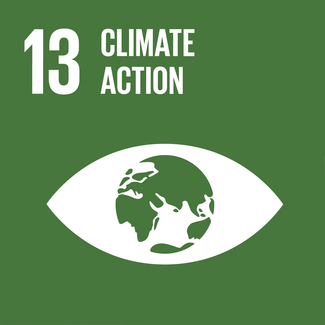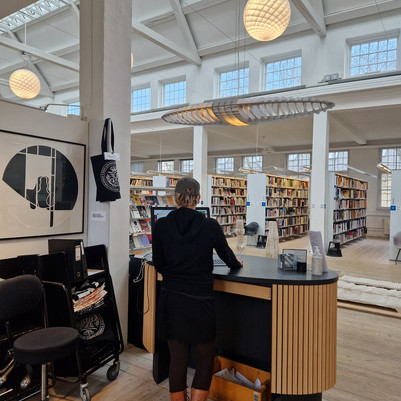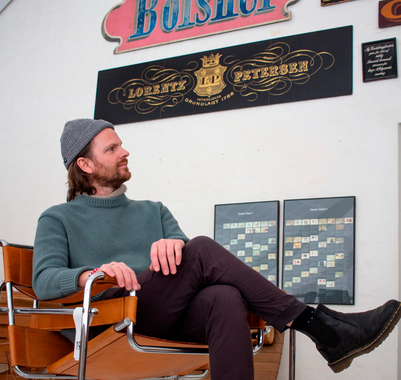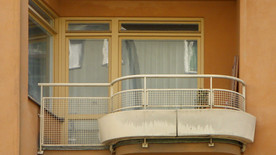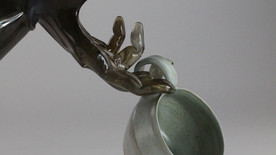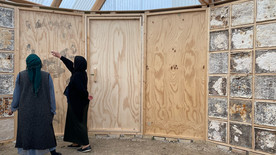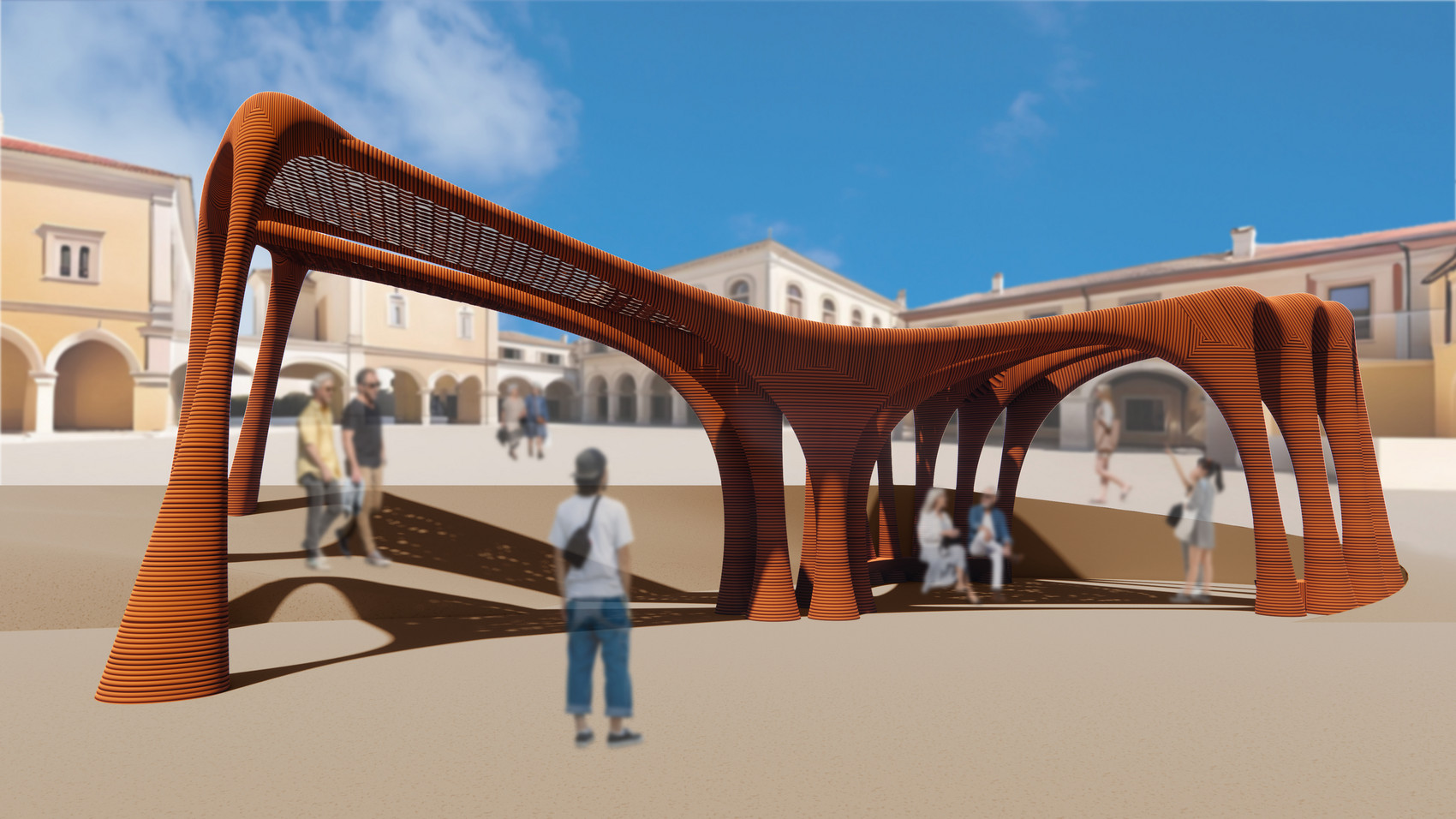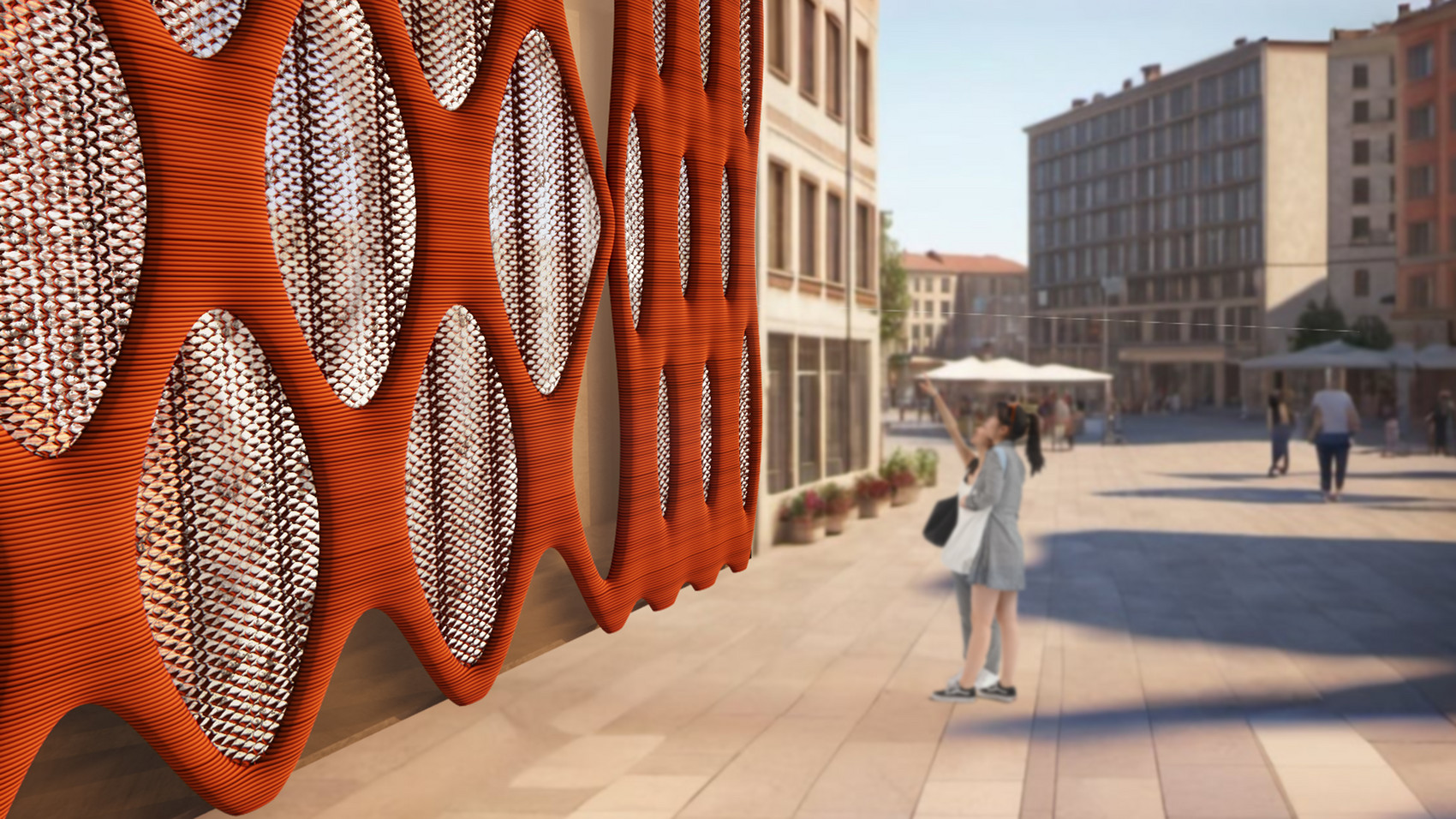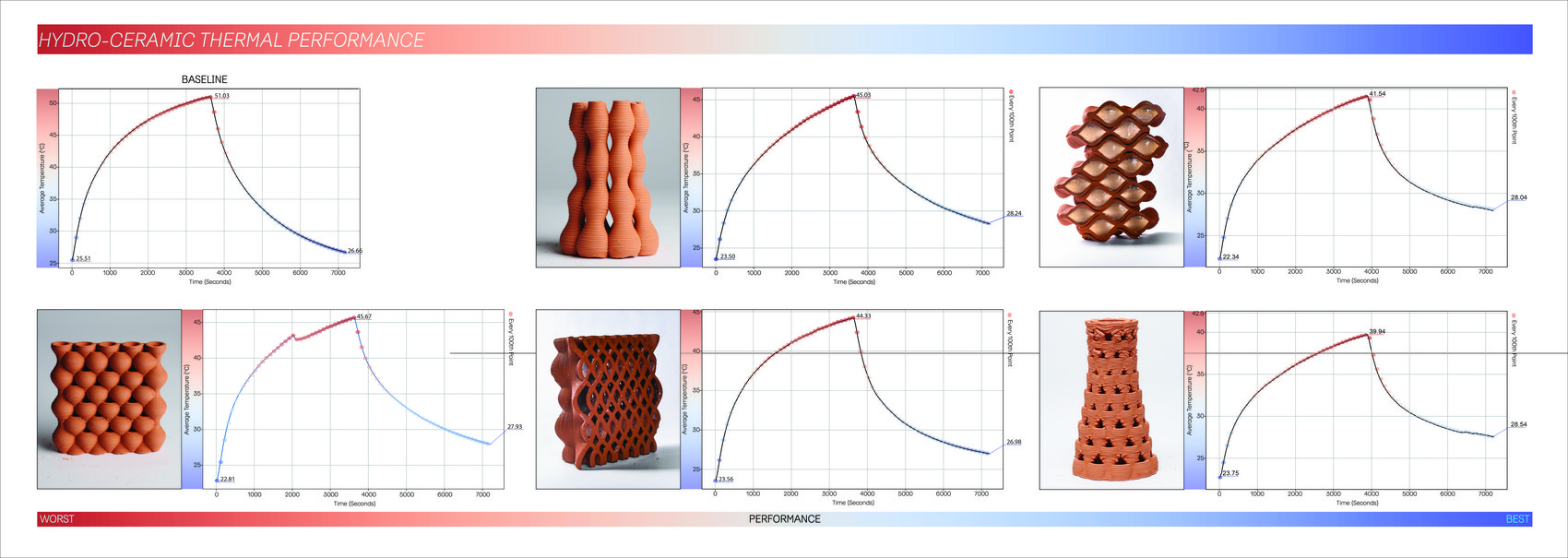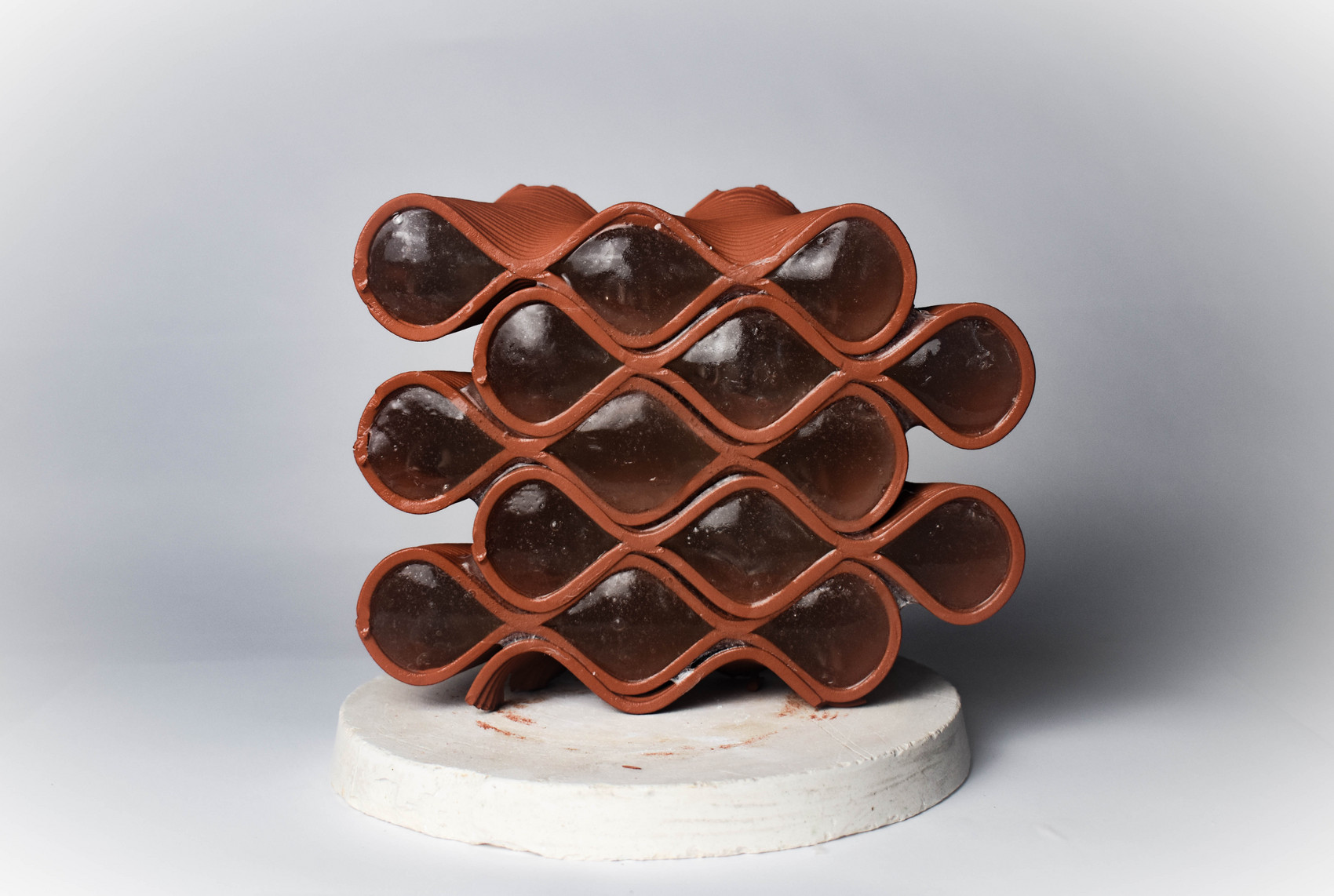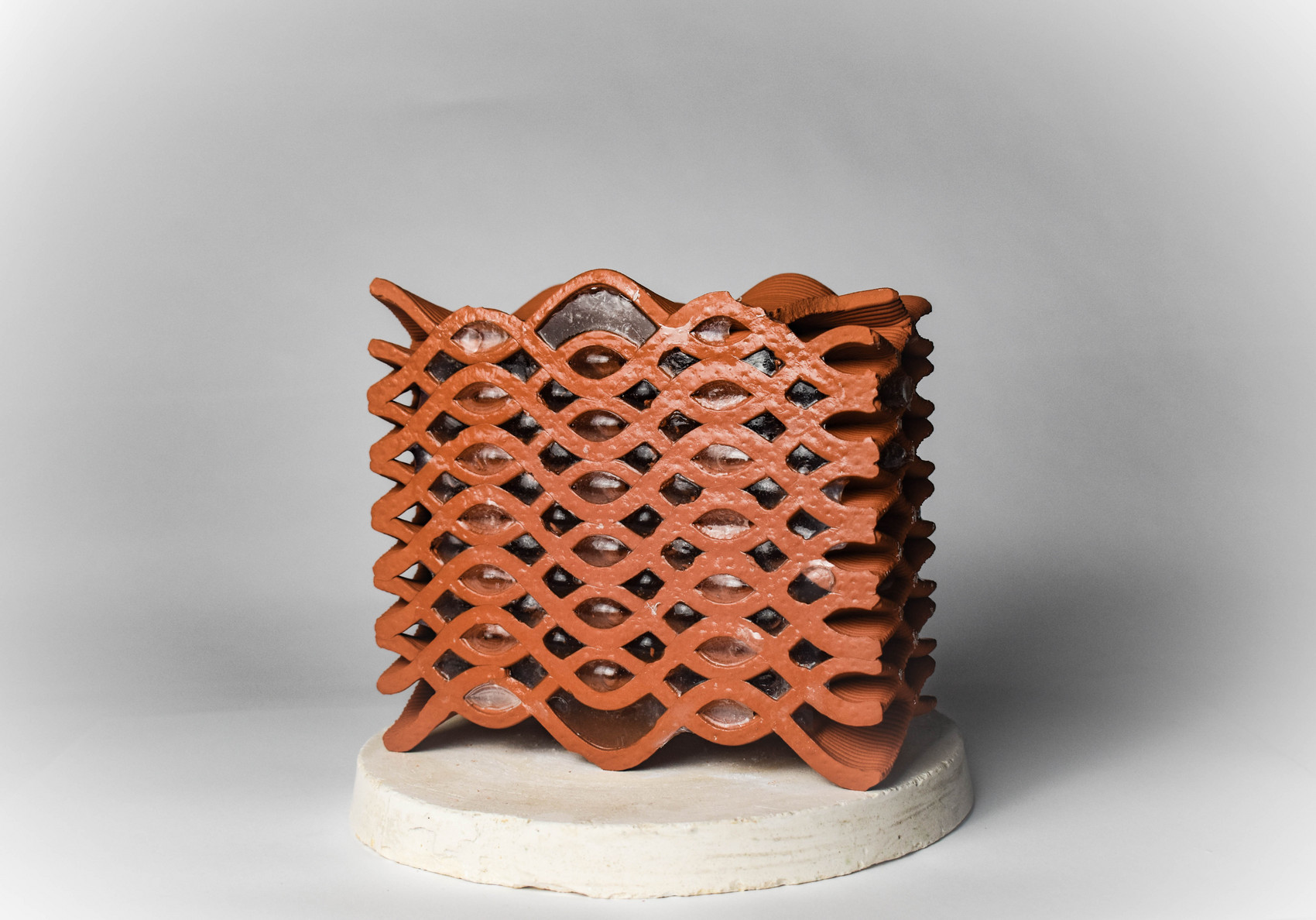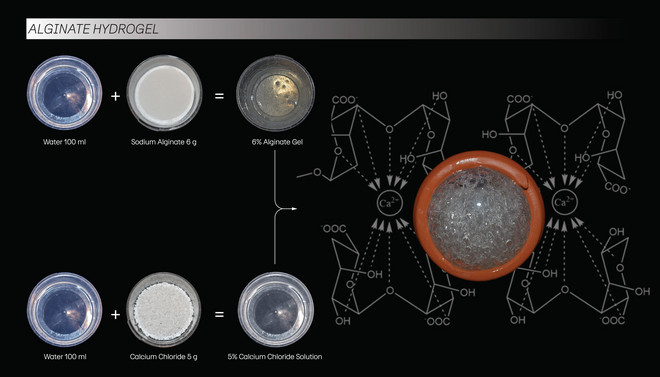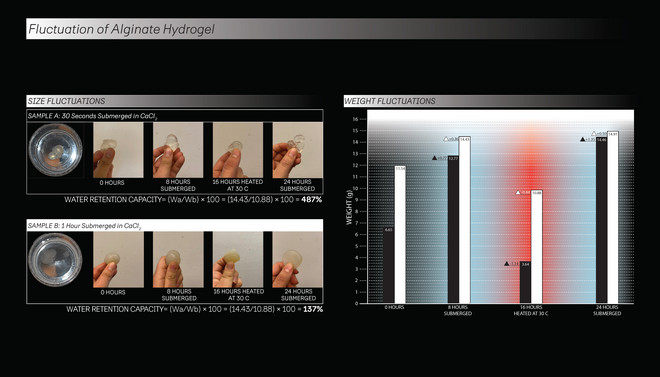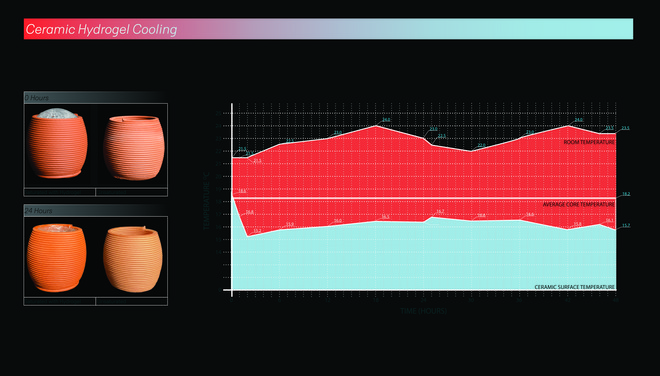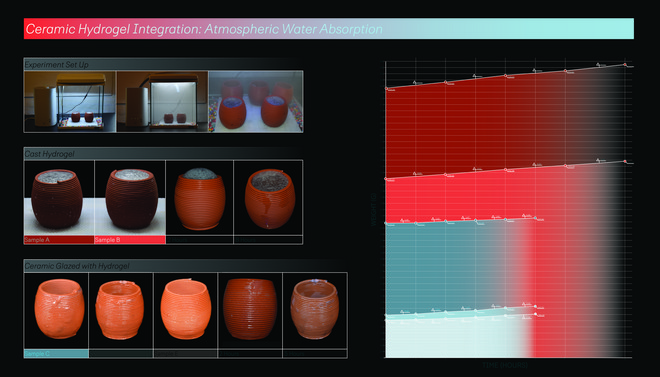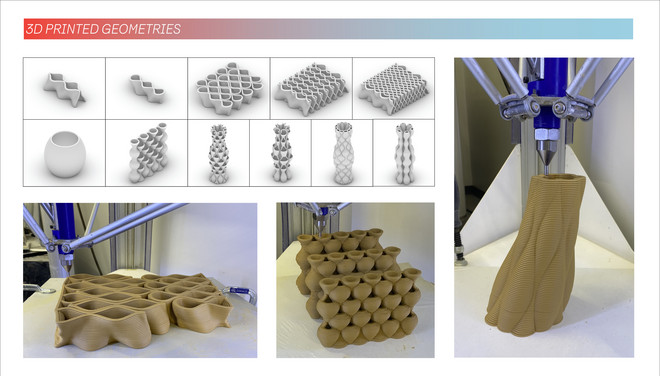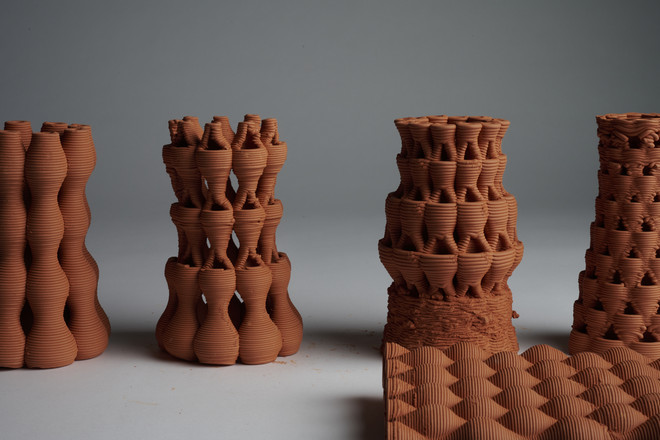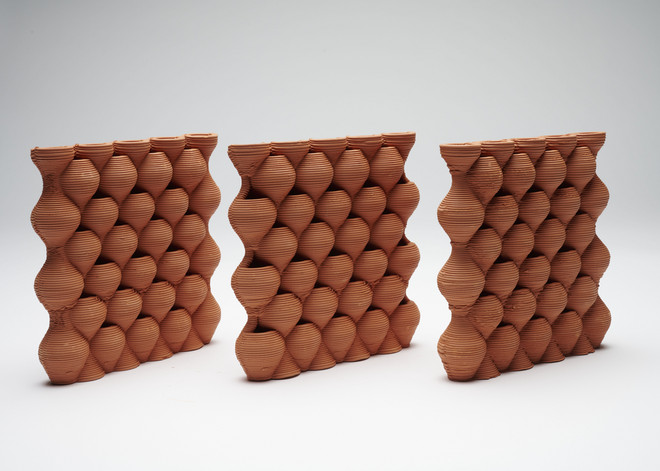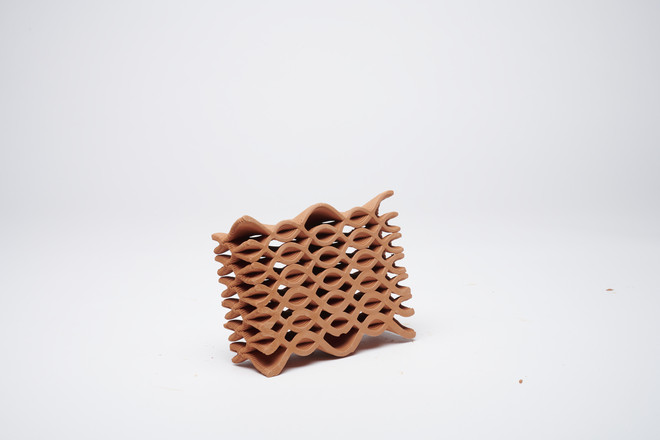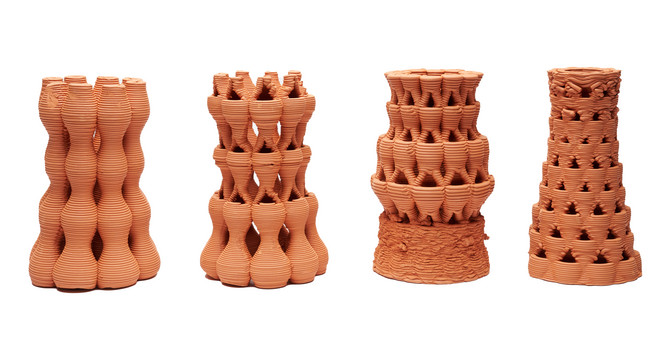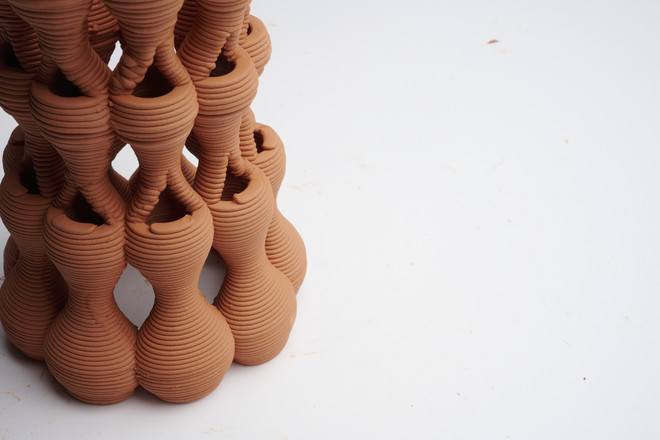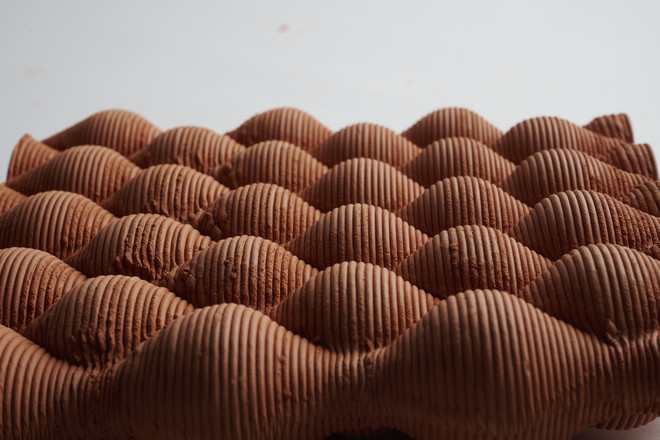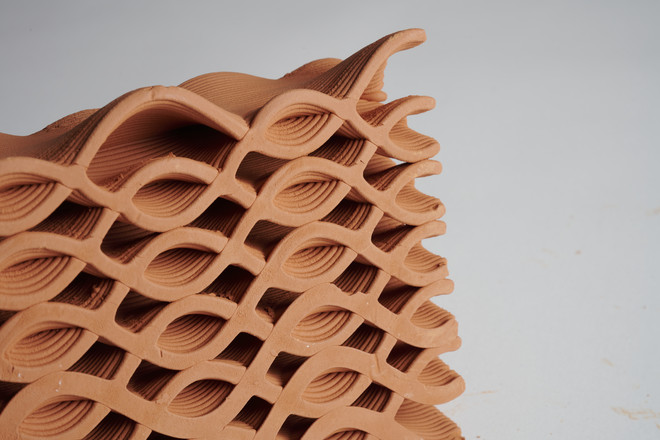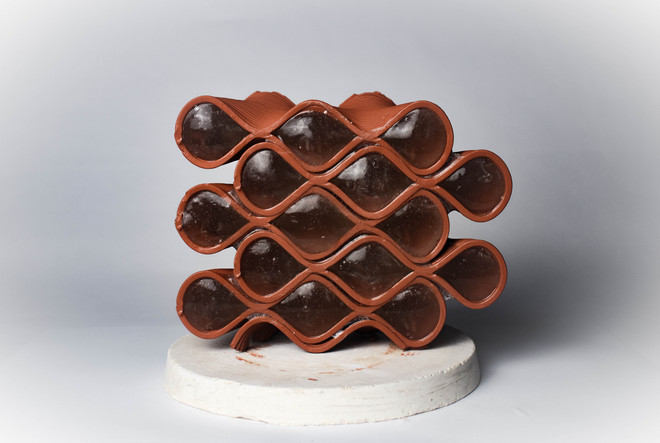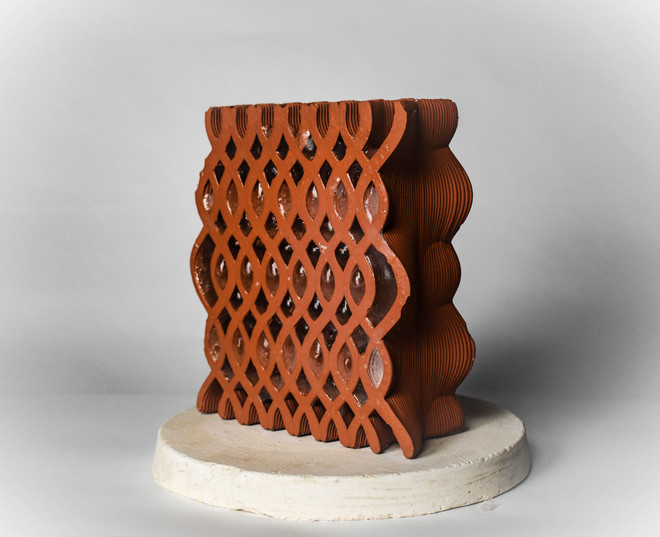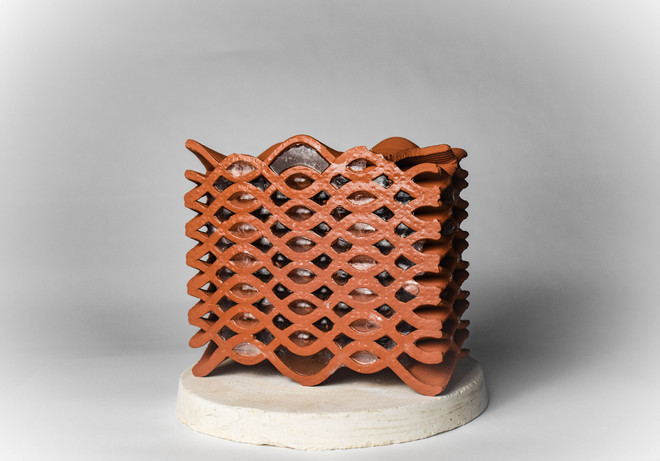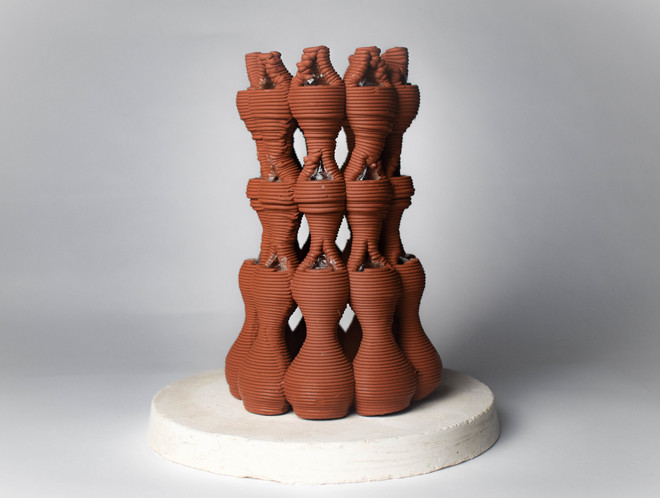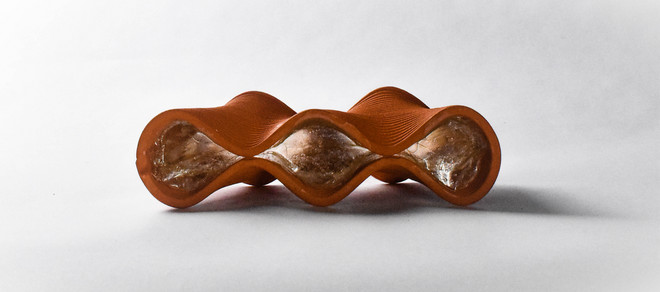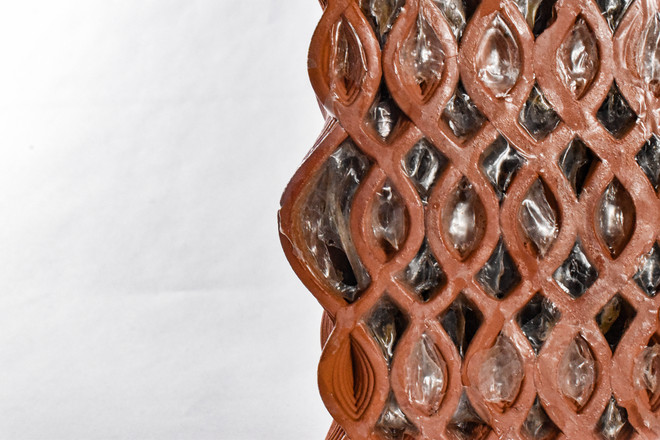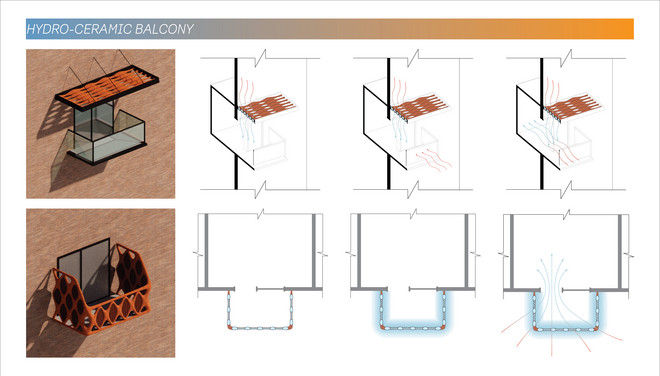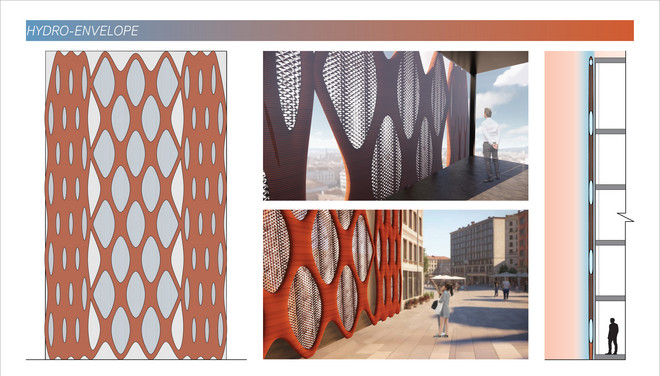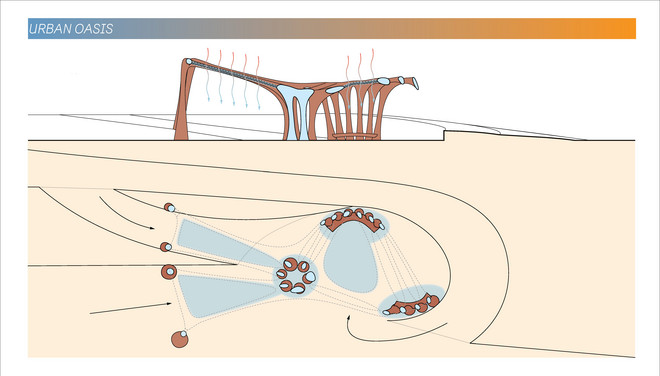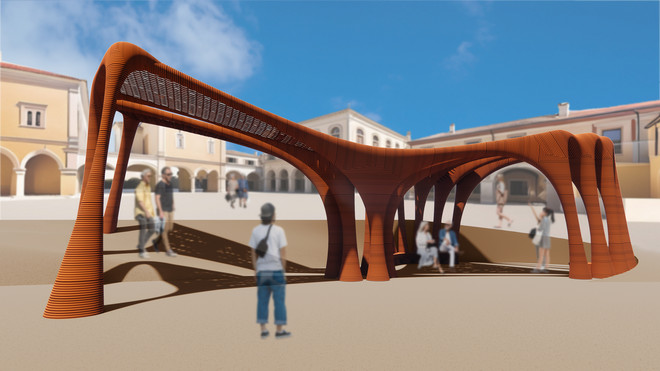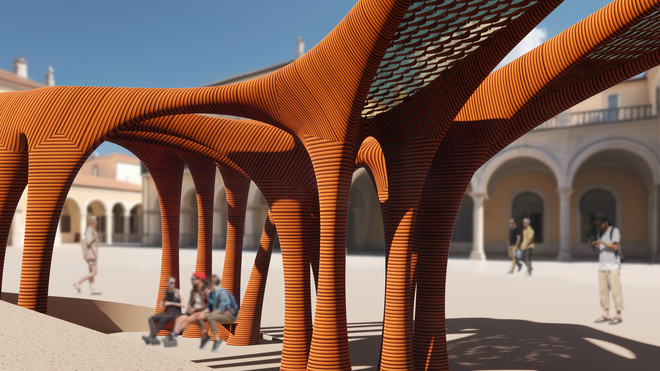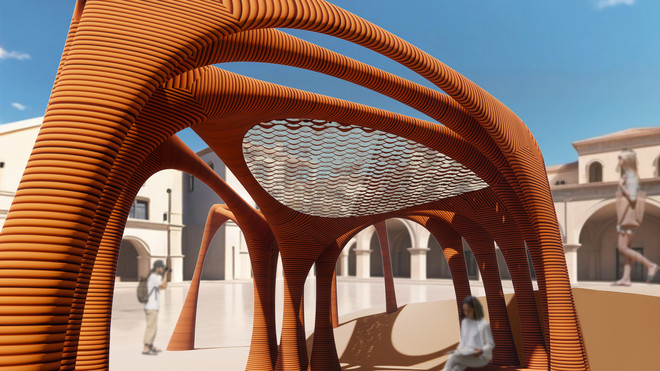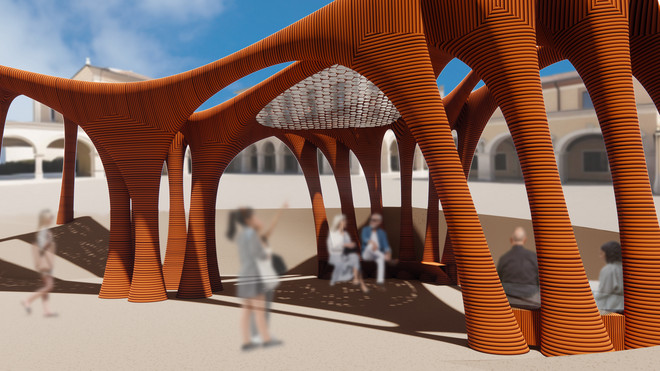
Cool Fusion: Hydrogel Enhanced Ceramics for Passive Evaporative Cooling
“Cool Fusion” introduces a novel passive evaporative cooling system. By integrating hydrogel, an innovative atmospheric water harvester, into 3D printed ceramics, the project reinterprets traditional cooling methods reliant on porous ceramics. Through the flexibility of 3D printing and thermal performance testing, designs are tailored to the site to optimize the system’s cooling effects.
ABSTRACT
Climate change is causing global temperatures to rise, posing serious health risks to many vulnerable populations. Modern cooling methods, such as air conditioning, are energy-intensive and paradoxically both a cause and effect of the climate crisis. However, the need for cooling predates electricity, with a rich history of passive cooling strategies to draw from. This research revisits ancient passive evaporative cooling techniques using porous ceramics, reinterpreting them with digital technology and novel materials. Specifically, the project explores integrating hydrogel—a highly water-absorbent material that can be repeatedly rehydrated, sometimes even from ambient humidity—into 3D-printed ceramic modules. Various methods of integrating hydrogel into printed ceramics were tested and evaluated based on cooling performance. The research culminates in a series of design scenarios exploring how these hydro-ceramics could be implemented on an architectural scale to combat rising temperatures.
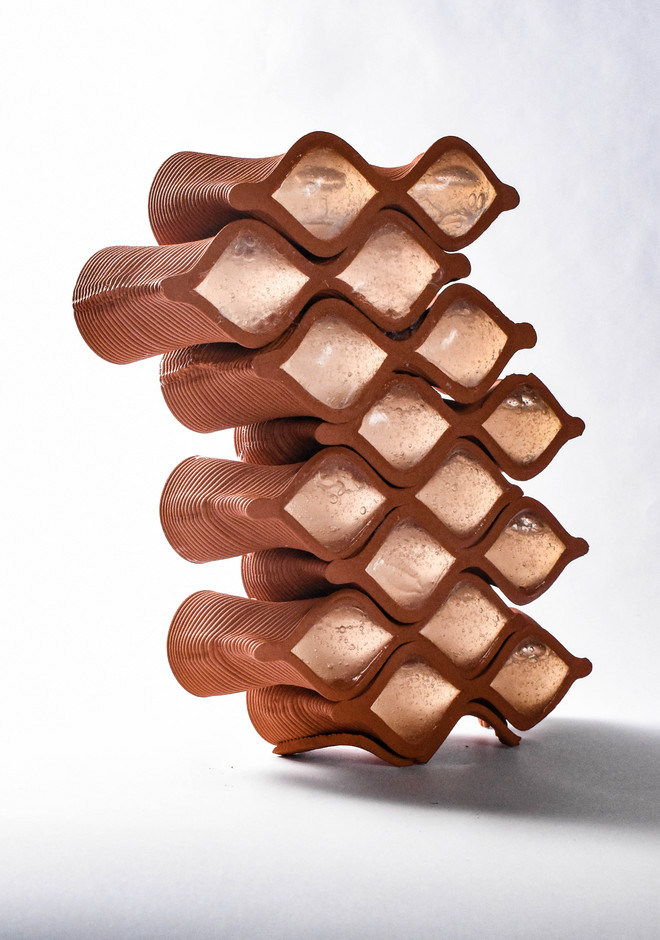
EVAPORATIVE COOLING PRINCIPLES
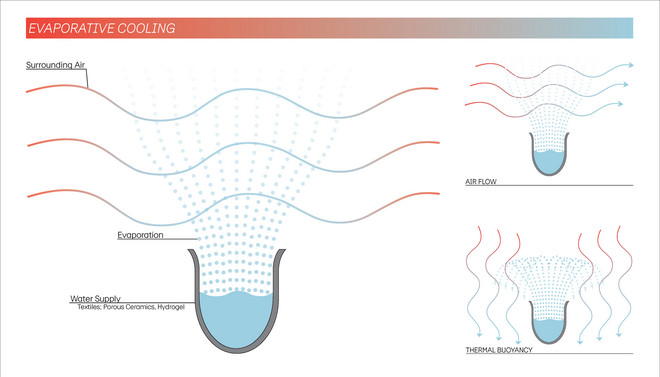
Evaporation, the phase change from liquid water into vapor, is an
endothermic reaction. The reaction uses and removes the latent heat from the surrounding air to change the liquid into vapor. To facilitate evaporative cooling there must be latent ambient heat and a water supply. There are two primary methods for dispersing the cooled air effectively. First by utilizing air flow, either through natural wind or mechanical fans to disperse the cooler air. Second, employing the principle of thermal buoyancy as the cooled air becomes denser due to the increased water content and it naturally falls facilitating air circulation.
HYDROGEL PROPERTIES
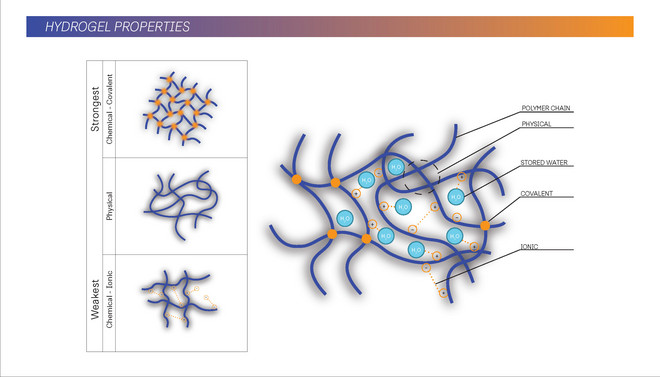
Hydrogel is a generic term for a gel with a specific three-dimensional chemical structure with the unique ability to absorb water from the atmosphere and swell to hundreds of times its own weight. A hydrogel is composed of many long strands of polymers with three different types of connections between the strands, covalent bonds, physical connections, and weak chemical bonds. The covalent bonds, the strongest bonds in the chemical makeup of a hydrogel, ensure durability and longevity. The physical connections contribute to the material's elasticity. The weak chemical bonds allow the material to expand and contract with the absorption and evaporation of water. The result is like that of a three-dimensional textile, with the unique ability to store water molecules in the openings between connections.
A series of material experiments were performed to understand the performance of the hydrogel and ceramic separately and the integration of the two.
THERMAL PERFORMANCE EVALUATION
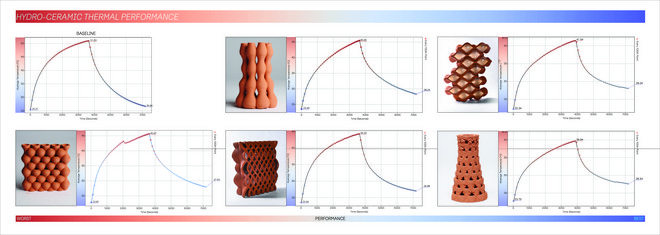
Using a controlled environmental chamber, the hydrogel ceramic components were evaluated to see which protypes had the most cooling cababilities.
Using the best performing prototypes, a series scenarios looking at possible applications of the evaporative cooling system on different scales.
Det Kongelige Akademi understøtter FN’s verdensmål
Siden 2017 har Det Kongelige Akademi arbejdet med FN’s verdensmål. Det afspejler sig i forskning, undervisning og afgangsprojekter. Dette projekt har forholdt sig til følgende FN-mål




